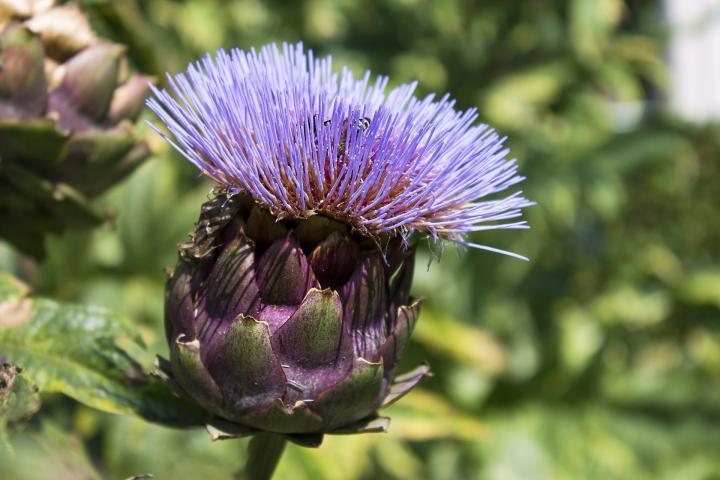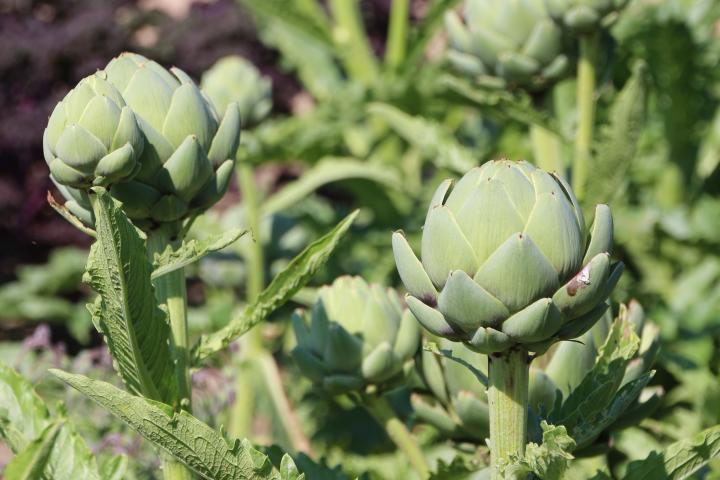
Planting, Growing, and Harvesting Artichokes
Artichokes are delicious raw or cooked. They can also be pickled or canned.
Before cooking, slice off the bottom of the stem and any though outer leaves. Cut off about 1 inch of the spikey top of the artichoke.
Steam artichokes, don’t boil them. Steaming cooks them with just the right amount of moisture.
ADVERTISEMENT
Why are ants all over my artichokes? They don’t seem to be eating them but there are a ton of ants on them!
The artichoke is a flower bud, so the ants could be looking for nectar to feast upon. They could also be looking for aphids, which produce a sweet substance called honeydew. Ants are known to “farm” aphids; they protect the aphids from predators (such as ladybugs) and eat the sweet honeydew that the aphids secrete.
I think I can get two crops from my plant, as the spring crop is already done. Do I cut the old done growth back, like I would in the fall?
Sure, if you live in the right climate (such as coastal areas of California) artichokes will produce buds throughout the entire year. For those who don’t get buds until summer, probably not. Prune the whole plant down by about a half, which usually stimulates rebudding.
Another way to keep cut artichokes is to cut part of the stem and place it in a bowl of water. I've done this with limp artichokes and the firm right up. I have a hard time deciding between cutting the artichokes off the plant or letting them become a beautiful flower. So pretty.











Comments